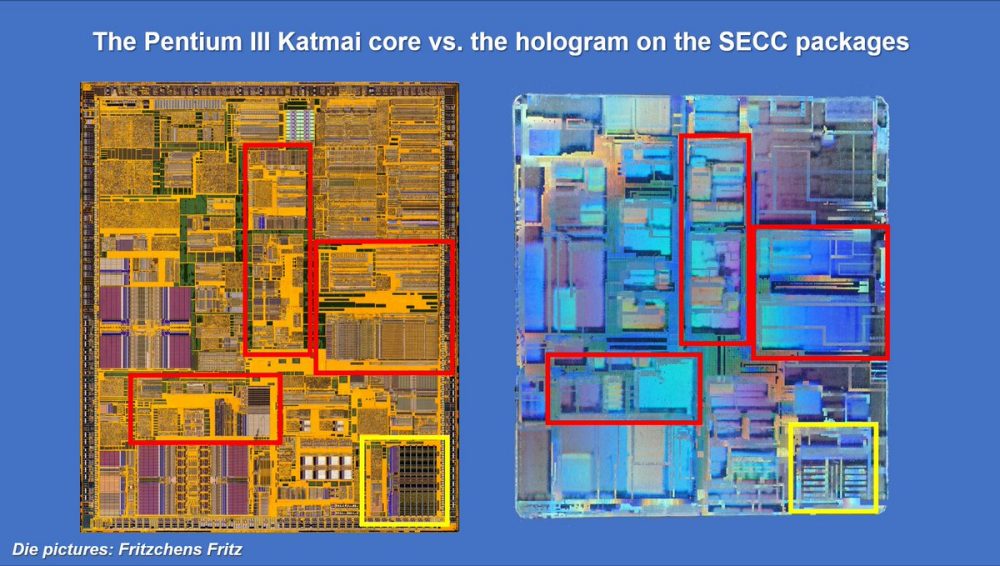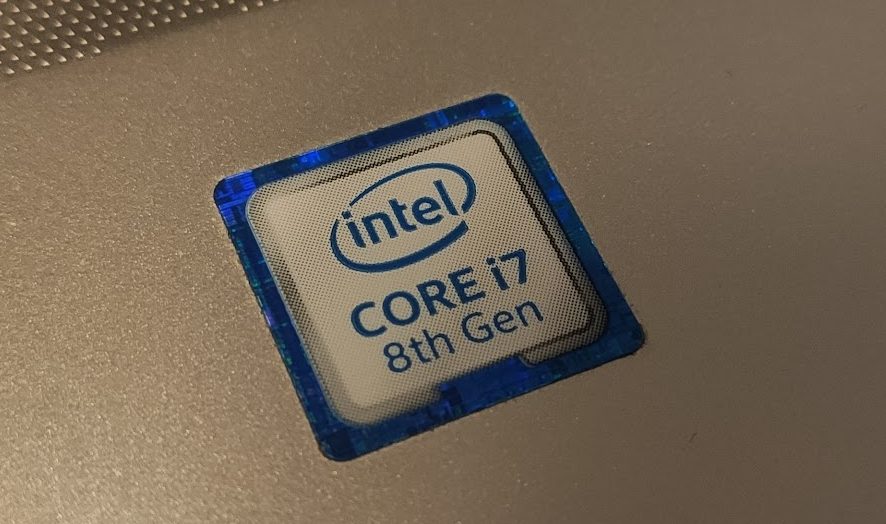It was the end of February 1999 when Intel debuted its new CPU on the market Pentium III. Since then, a lot of water has passed under the bridge but the Santa Clara society has nevertheless kept unchanged a custom that began many years ago. Systems based on Intel processors, in fact, show a sticker containing a hologram. It’s a sort of certification which the company, now led by Pat Gelsinger, uses to attest to the authenticity of its CPUs.
As seen in this post on Xthe Pentium III from 25 years ago (the code name was Katmai) sported the adhesive label directly on the SECC (Single Edge Contact Cartridge), the casing used as a container for the processors. The SECC of the Pentium III had a rectangular shape with the contacts arranged on one side of the module. It was equipped with a heatsink (cooling solution) integrated into the package itself.
Image Source: CPU Duke e FritzchensFritz.
On the left the photo of die of the Pentium III, on the right the contents of the Intel holographic label. As you can see, the areas highlighted in red are quite similar, while an area highlighted in yellow seems curiously rotated compared to the internal structure of the chip. This suggests that the sticker design both a reality prior to the definitive form that the historic Intel processor then took.
Intel stickers also present on the most modern systems: this is how they are made
You may also have an Intel hologram sticker on the notebook you are using right now. Try taking a look: underneath the keyboard you may find a label with the name of the predecessor used and the generation of the CPU.
Apparently, the reference to the internal structure of the processor seems to have disappeared. We were saying, only apparently.
Perhaps you don’t know, in fact, that by carefully removing the sticker and applying it, for example, to a glass, so that you can look comfortably at what is underneath, “magically” the design del chip. The effect obtained is visible, for example, in this post on Reddit (see the image on the right which depicts the back of the label).
There is also a replacement program for lost or damaged labels
Intel is particularly keen that users of devices based on its processors can sport the holographic sticker. And it even provides a special program, also accessible from Europe, to request a replacement label in the event that the original one has been lost or damaged.
The only thing Intel requires is proof of purchase of the system based on its processor, such as a copy or photo of a receipt or purchase invoice. In the absence of this “support”, the Santa Clara company is also satisfied with one screenshot acquired through the Intel System Support Utility program.
There are also some licensing terms for the use of stickers: although they are essentially aimed at hardware resellers, the conditions require the removal of the label if changes are made to the operation of the processor.



